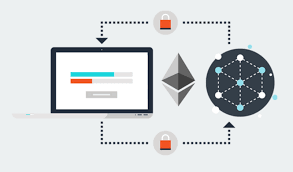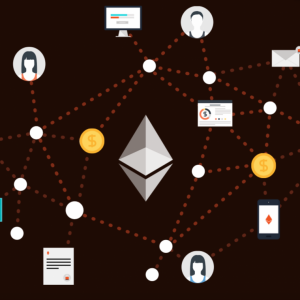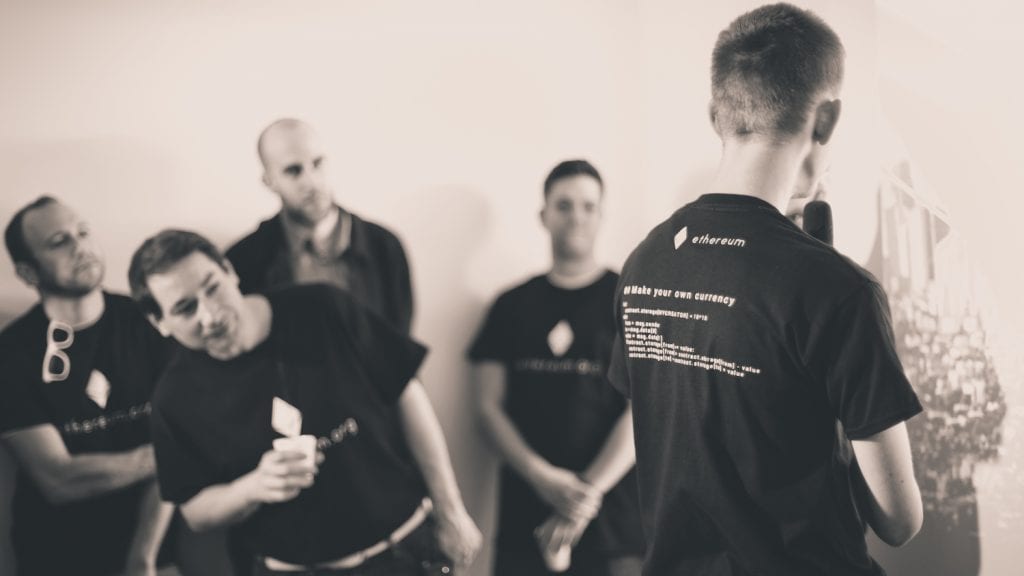
It has generally been an enormously taxing task to build blockchain applications in the past, as the process requires developers with profound background in coding, mathematics, cryptography, as well as other important resources. But today, technology has furnished developers with the tools to create applications, previously considered unimaginable. Applications for electronic voting, digitally recorded property assets, regulatory compliance, and trading are being created and deployed faster than ever before. Ethereum is the latest innovation in the blockchain sector, which is allowing users to create decentralized applications on their own, by leveraging the appropriate tools.
Essentially a decentralized platform, Ethereum processes smart contracts. In other words, Ethereum assists applications to run precisely as programmed, without necessarily encountering any kind of downtime, censorship, fraud, or third party interference. The blockchain technology has been mostly associated with Bitcoin in the more recent years. However, the utilization of blockchain goes beyond digital currencies, and extends to include several other applications.
Ethereum was originally described in 2013 in a white paper by Vitalik Buterin, a renowned programmer. He voiced his concerns surrounding Bitcoin and stressed on the need for a more robust scripting language for developing applications. His concern failed to reach agreement, following which he developed a new platform with a more generalized scripting language for building decentralized applications more efficiently.
The technology has been originally developed in early 2014 by the Ethereum Foundation, a Swiss nonprofit, with contributions from brilliant minds across the globe. The project received funding from online public crowdsale during July–August 2014, where participants bought Ethereum value token (ether) with another digital currency, bitcoin.
Brief comparison between Ethereum and Bitcoin
Both Bitcoin and Ethereum are rooted in public blockchain networks, however, they differ significantly in purpose and capability. The main purpose behind designing Bitcoin was to provide a peer to peer electronic cash system that enables online Bitcoin payments. Thus, Bitcoin spans over just one application of blockchain technology. The Bitcoin blockchain is used to track ownership of digital currency (bitcoins). Ethereum blockchain, on the other hand, concentrates on running the programming code of any decentralized application.

Essentially, both Bitcoin and Etherium run on blockchain technology. However, the former’s use is limited to that of peer to peer electronic cash system, as it is only an application. Etherium, on the other hand, is a platform in itself. Powered by blockchain technology, the platform allows users to create more applications like Bitcoin.
Additionally, miners in the Ethereum blockchain work to earn Ether, instead of mining for Bitcoin. Ether is also a type of crypto token that fuels the network, and application developers often pay for transaction fees and services on the Ethereum network.
Ethereum’s Smart Contract
Ethereum provides the smart contract feature which helps in describing computer code that can facilitate the exchange of money, content, property, shares, or anything of value. A smart contract acts like a self-operating computer system, when run on a blockchain. A smart contract executes automatically when specific conditions are met.

Steps key to execution of Smart Contracts:
- An option contract between the parties is written as code into the blockchain. The contract is the public ledger, however, the individuals involved remain anonymous.
- A triggering event like an expiration date and strike price is a hit, and the contract executes itself according to the coded terms.
- Market activity can be understood by the regulators using the blockchain technology, while maintaining the privacy of individual actors’ positions.
Why is Ethereum advantageous?
Besides, Smart Contracts, Ethereum furnishes a host of other useful capabilities. With Ethereum, developers can easily create markets or store registries of debts or promises. It can also help to move funds in accordance with instructions given long in the past.
Most of the blockchains reflect a severely limited ability to process code. Ethereum proves useful in such situations. Ethereum allows developers to create any operation they want, rather than furnishing a set of limited operations. In other words, thousands of different applications can be created using Ethereum.

With Ethereum, users can build and deploy decentralized applications, or Dapp. Moreover, Ethereum proves useful in decentralizing any services that are centralized. In a decentralized network, applications are well-protected against hacking attacks and fraudulent activities. This is a result of decentralized networks having no central point of failure. Some of the advantages of implementing decentralized networks include immutability, protection against corruption and temper, and security.
Another advantage of Ethereum includes its ability to create a Decentralized Autonomous Organizations (DAO), which refers to a fully autonomous, decentralized organization with no single leader. To run a DAO, a user must program a code on a collection of smart contracts, written on the Ethereum blockchain.
Competition in the Market
The Ethereum platform was developed only couple of years back, but its popularity is surpassing that of Bitcoin. The platform has much more to offer, which will transcend past our imagination. This growth in popularity has prompted many startups to target Ethereum, and the space has witnessed the advent of other competitors for Ethereum. Let’s glance through some of these platforms that the competitors are offering.

- MaidSafe: A Scotland-based company, MaidSafe is working on the design and implementation of SAFE network since 2006. This marks a new way to access the apps in a highly secured manner. The project also provides a decentralized Peer-to-Peer internet platform, hosting attributes similar to Ethereum.
- RootStock: This is yet another Peer-to-Peer platform, which utilizes Bitcoin’s blockchain technology to run Smart Contracts. The primary focus of this project is to add value and functionality to the core Bitcoin network.
- Counterparty: Another decentralized system based on the very Bitcoin blockchain, Counterparty provides a P2P platform for financial applications. Using an open-source protocol, the platform furnishes a safe and sturdy marketplace powered by Bitcoin’s blockchain.
- Tau-Chain: This project, also called T-chain, aims at fostering the use of P2P networking with three unified faces – Rules, Proofs, and Computer programs. The users have to agree on certain economic characteristics of the network.
What does Ethereum propose for the Future?

Ethereum’s robust platform is set to move forward with its user-friendly platform, enabling users to harness the power of blockchain technology. It’s a proven fact that decentralized applications can disrupt several industries, including healthcare, academia, insurance, finance, real estate, and the public sector among others. Ethereum is playing a crucial role at this stage by speeding up the decentralization of the world economy.
The platform has been expected to create an impact on communications, and the entire information infrastructure as a whole. Consumers will leverage the blockchain identity and access point to interact with a variety of early stage offerings, once scalability and configurable privacy grows on public Ethereum, over the next two years.





















